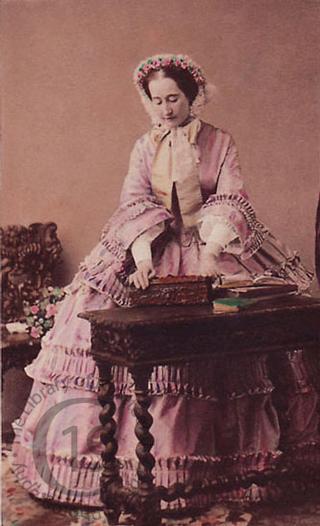
Empress Eugénie
A carte-de-visite portrait of the Empress Eugénie (1826-1920).
By her beauty, elegance, and charm of manner, the Empress Eugénie contributed greatly to the brilliance of the imperial regime. She had a very close friendship with Princess Pauline de Metternich, wife of the Austrian ambassador in Paris, who played an important role in the social and cultural life of the imperial court.
When the empress adopted the new cage crinolines in 1855, European fashion followed suit, and when she abandoned vast skirts at the end of the 1860’s, at the encouragement of her legendary couturier, Charles Worth, the silhouette of women's dress followed her lead again. Eugénie's aristocratic elegance, splendor of dress and legendary jewels are well documented in innumerable paintings, especially by her favourite portraitist, Winterhalter. Her interest in the life of Marie Antoinette sparked a fashion for furniture and interior design in the neoclassical style popular during the reign of Louis XVI.
As she was educated and very intelligent, Eugénie's husband usually consulted her on important questions, and she acted as Regent during his absences, firstly in 1859, then again in1865 and 1870. A Roman Catholic and a conservative, Eugénie's influence countered any liberal tendencies in her husband’s policies. She was a staunch defender of papal temporal powers in Italy and an ultramontanist. Because of this, she was hated anti-clericals in France was frequently the subject of their scurrilously slander.
Photographed by Disdéri of Paris.
Code: 124098




